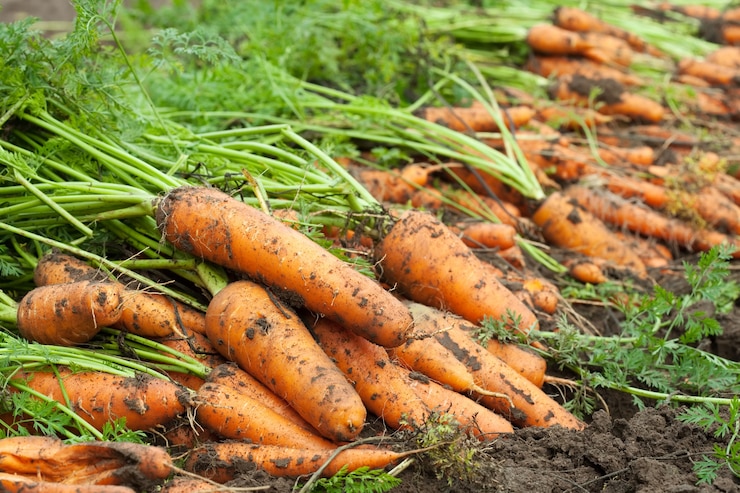Carrots are a popular and nutritious root vegetable that can be grown successfully in South Africa. Whether you’re an experienced gardener or a beginner, it’s important to understand certain aspects of carrot cultivation to ensure a successful harvest. Here are ten important things you should know before growing carrots:
- Climate and Region: Carrots thrive in cool to moderate temperatures. In South Africa, they are typically grown in regions with a temperate climate, such as the Western Cape, Eastern Cape, and parts of Gauteng and KwaZulu-Natal. Carrots prefer temperatures between 15°C and 25°C for optimal growth.
- Soil Requirements: Carrots prefer loose, well-drained soil with good fertility. Before planting, remove rocks, debris, and weeds from the soil. Avoid heavy clay or compacted soils, as they can cause misshapen or stunted roots. If needed, improve the soil structure by adding organic matter, such as compost or well-rotted manure.
- Variety Selection: There are various carrot varieties available, ranging in size, shape, and color. Choose a variety that suits your preferences and growing conditions. Popular varieties in South Africa include Nantes, Chantenay, and Imperator. Consider factors such as root length, disease resistance, and flavor when selecting your carrot variety.
- Planting Time: Carrots are a cool-season crop and can be planted in both spring and autumn in South Africa. In cooler regions, planting in early spring or late summer may be ideal. In warmer regions, it’s best to plant carrots during the cooler months to avoid excessive heat stress.
- Seed Preparation and Planting: Carrot seeds are tiny and require careful handling. To aid germination, you can soak the seeds in water for a few hours before planting. Plant the seeds directly into the prepared soil, sowing them thinly and evenly. Cover the seeds with a light layer of soil, approximately 1 cm deep.
- Spacing and Thinning: Carrot seeds are usually sown thinly, as they require space to develop properly. Once the seedlings emerge, thin them out to provide adequate spacing. Depending on the variety, carrots typically require spacing of 5-10 cm between plants and 20-30 cm between rows.
- Watering: Carrots need consistent moisture for optimal growth. Ensure the soil remains evenly moist during the germination and early growth stages. Once established, water deeply but less frequently to encourage the roots to grow deeper into the soil. Avoid overwatering, as it can lead to rot or split roots.
- Weed Control: Carrots are sensitive to weed competition, which can affect their growth and development. Keep the planting area free from weeds by regularly hand-weeding or using shallow cultivation methods. Be careful not to disturb the carrot roots while removing weeds.
- Pest and Disease Management: Carrots can be susceptible to pests like carrot fly and diseases such as powdery mildew and leaf blight. Implement preventive measures such as crop rotation, practicing good garden hygiene, and monitoring for early signs of pest or disease infestation. Organic pest control methods, such as row covers or insecticidal soaps, can be effective.
- Harvesting: Carrots are typically ready for harvest 60-80 days after planting, depending on the variety. Harvest when the roots have reached the desired size and color. Gently loosen the soil around the carrots and carefully lift them from the ground, grasping the foliage near the top. Avoid damaging the roots during harvesting.
By considering these ten important factors before growing carrots in South Africa, you’ll increase your chances of a successful harvest. Enjoy the process of cultivating these vibrant and nutritious vegetables and savor the fresh, homegrown flavor of your own carrots.
Join 'Farmers Mag' WhatsApp Channel
Get the latest Farming news and tips delivered straight to your WhatsApp
CLICK HERE TO JOIN






